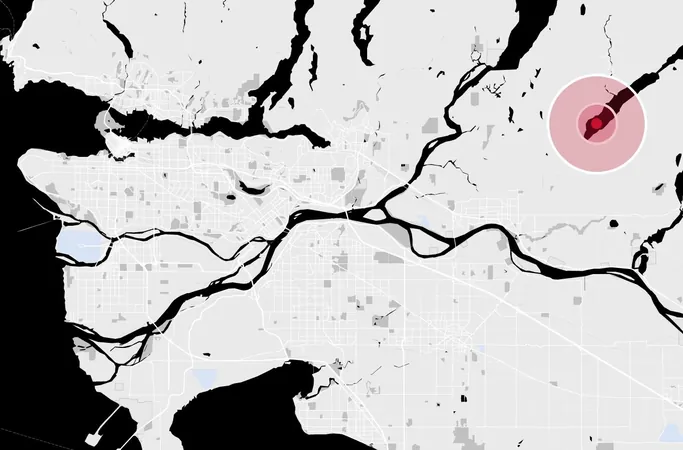
Mystery of Fomalhaut's Warped Ring: Is a Hidden Planet Behind It?
2025-09-09
Author: Amelia
Astronomers Unravel the Secrets of Fomalhaut's Unusual Disk
In a groundbreaking discovery, astronomers from the Center for Astrophysics | Harvard & Smithsonian and Johns Hopkins University have unveiled the highest-resolution image yet of the warped disk encircling Fomalhaut, one of the brightest stars in our cosmic neighborhood.
Utilizing the state-of-the-art Atacama Large Millimeter/submillimeter Array (ALMA) telescope, scientists have gained unprecedented insights into why Fomalhaut exhibits such an unusual and enigmatic structure.
The Eccentricity Enigma
This latest image has revealed that the disk's eccentricity—its lopsidedness—changes with distance from the star, suggesting the influence of a hidden planet. Astrophysicist Joshua Bennett Lovell, a Submillimeter Array Fellow, remarked, "For the first time, we are seeing that the disk's eccentricity isn’t a fixed trait; it diminishes with distance, a phenomenon that has never been conclusively demonstrated in any other debris disk before."
A New Model Shakes Old Assumptions
The research team has published two pivotal papers in the Astrophysical Journal and Astrophysical Journal Letters, reshaping previous assumptions about debris disks. Unlike earlier models that proposed a uniform eccentricity, their innovative, data-driven approach reveals that the disk becomes less stretched as you move away from Fomalhaut—a finding likened to Saturn's rings being off-center.
Using high-resolution images obtained at 1.3mm wavelengths, the researchers created a new model that adjusts the disk's characteristics based on its distance from the star. This fresh perspective aligns with predictions that massive planets can sculpt debris disks, hinting at potential hidden worlds orbiting Fomalhaut.
Hints of Hidden Planets?
The decrease in eccentricity offers tantalizing clues about a possible hidden planet that could have influenced the disk's shape during the early history of its solar system. This peculiar formation may have stood the test of time, altered over 400 million years by the gravitational pull of the concealed planet.
Ruling Out Old Models
In the second study, the team firmly dismissed the notion that the disk's eccentricity remains fixed relative to the star distance. Graduate student Jay Chittidi noted, "While we anticipated shifts in brightness, the exact variations we observed couldn't be reconciled with existing models. We were unable to find a static model that accounted for the unique features present in Fomalhaut’s disk."
Looking Ahead to New Discoveries
The team is optimistic that this newly developed eccentricity model will face further tests in upcoming ALMA observations. Lovell expressed hope, stating, "We anticipate uncovering new clues that will lead us closer to identifying that elusive planet."
In the spirit of collaboration, the researchers have made their eccentricity model code available, allowing other astronomers to apply it to similar systems, potentially opening the door to more discoveries in the depths of space.









 Brasil (PT)
Brasil (PT)
 Canada (EN)
Canada (EN)
 Chile (ES)
Chile (ES)
 Česko (CS)
Česko (CS)
 대한민국 (KO)
대한민국 (KO)
 España (ES)
España (ES)
 France (FR)
France (FR)
 Hong Kong (EN)
Hong Kong (EN)
 Italia (IT)
Italia (IT)
 日本 (JA)
日本 (JA)
 Magyarország (HU)
Magyarország (HU)
 Norge (NO)
Norge (NO)
 Polska (PL)
Polska (PL)
 Schweiz (DE)
Schweiz (DE)
 Singapore (EN)
Singapore (EN)
 Sverige (SV)
Sverige (SV)
 Suomi (FI)
Suomi (FI)
 Türkiye (TR)
Türkiye (TR)
 الإمارات العربية المتحدة (AR)
الإمارات العربية المتحدة (AR)